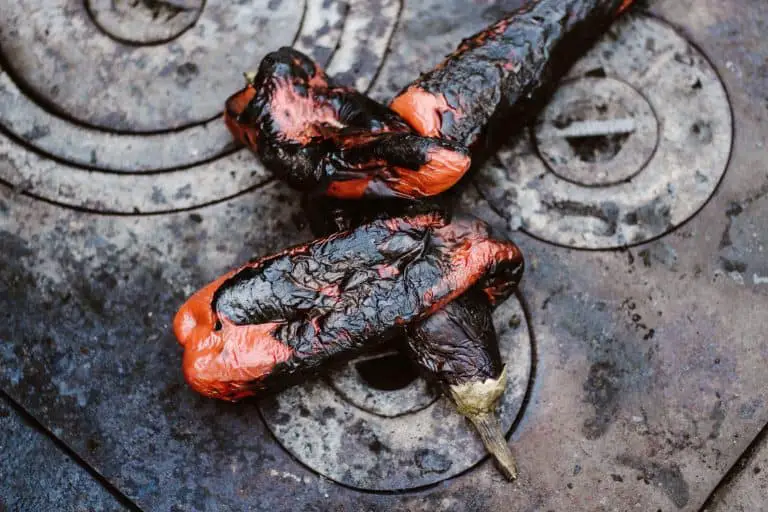There is nothing worse than slaving over a meal only to find out that it has not cooked properly. Even smokers, which are known for their ability to slow cook, can have off days. With years of practice, we have figured out a few solutions if your smoker is cooking too fast.
If your smoker is cooking too fast, check your user manual, test the internal temperature of the smoker, monitor the internal temperature of your meats, and confirm the recipe that you are using. Not all of these may be the issue, but use the process of elimination to see what your issue might be.
Being able to use a smoker at home is truly one of the most luxurious experiences on this Earth. However, when you notice that your smoker is cooking too fast and the food you are preparing in it is unfortunately ruined, you will want to fix the problem as soon as possible. Let’s take a closer look at what to do if your smoker is cooking too fast.
What to Do if Your Smoker is Cooking Too Fast
There is nothing more frustrating, infuriating, hair-pulling, and downright soul-draining to get all of your choices of meat perfectly marinated only to find out that they have cooked entirely too fast in your smoker. You cut that tender piece of pork loin only to find a ripe pink center and a charred outside rendering the cut completely inedible. It is every meat smoker’s worst nightmare, but it can happen to the best of us. Fortunately, there are steps you can take to figure out what on earth the deal is.
If your smoker is cooking too fast, your meat will cook too much on the outside without the increased internal temperature cooking the meat all the way through. To resolve this issue, you will need to ensure that the smoker is adjusted properly and that the internal temperature on the smoker and the meat are aligned with the recipe you are using.
Below you will find a few different possibilities for your smoker’s quick cooking problem. Use the process of elimination to see what exactly is causing your meat to look more like a burnt campfire marshmallow rather than a five-star dining delicacy.
Check and Recheck the User Manual
While many of us are eager to jump right into smoking our prized selection of meat that we have brought home from the local butcher or elsewhere, it is incredibly important to check and recheck the smoker’s user manual before using it. This is especially the case when you begin to see issues with your smoker such as it cooking too fast.
If you are new to the smoking world and have your beautiful new smoker all set up and (so you think) perfectly assembled and ready to go, check that user manual one more time. Make sure that you have conditioned it well before you first smoke, that all the vents are free and clear of any obstructions and are wide open, and that your wood/pellets/coal is stocked up correctly. You may have missed the obvious.
Even if you are experienced with smoking meat and other types of food, you should check the user manual if you are using a smoker that is new to you. With various settings and all different types of technology incorporated into new smokers, it is essential not to skip a step. Doing so is what could be leading to your improperly cooked food because of your smoker cooking too fast.
Check the Smoker’s Internal Temperature
Most modern smokers are going to have some type of temperature gauge on the outside, whether it is an analog or digital gauge. Here is the thing with the nifty little inventions though- sometimes, they are not as accurate as they put off to be. This is especially true for those temperature gauges that are analog. After some use, an analog gauge can be off as much as ten degrees giving you the wrong temperature when you need something precise.
A digital thermometer typically gives a much more reliable read when you are smoking and typically does not see as much temperature variance as analog gauges can. With that being said, if you want to ensure that your gauges are right on the money, check the internal temperature manually. Now, you may think this is impossible because once you open your smoker a good amount of heat is released and even more if you stand there with it open.
However, there is a little trick to this. To find the temperature you are cooking at, simply place a thermometer near the meat you are smoking. It is important to note the word “near.” Do not place the thermometer inside the meat as it will have a higher internal temperature than what is outside of it. Once you have the temperature read, compare it to what your smoker’s gauge is displaying and you can have a better idea of how to smoke going forward if the gauge reads wrong.
Check Your Meat’s Internal Temperature
When using a smoker, no one wants meat well done on the outside and running with blood on the inside. On the flip side, they do not want their prime rib to be smoked through in three minutes flat. At least, not many do – come on, that’s an odd combination. If this is not your cup of tea and you are at your wits end with meat that ends up being under or overcooked, you need to become the meat thermometer enthusiast.
A meat thermometer can be your best friend when trying to gauge whether or not your smoking masterpiece is ready to hit your plate. Every meat is going to have a temperature that it needs to reach in order to get to the perfect cooking point for your tastebuds. This device will be able to tell you exactly what temperature your meat is and thus, will give you a better idea of how little or how long it needs to remain in your smoker.
It is also important to understand how to use this device. When you are checking your meat’s internal temperature, be sure to stick the thermometer into the meat’s thickest part. If you have a piece that is bone-in, find the thickest part of it and drive the thermometer into the meat until you hit the bone. Once it hits, pull back just a bit so that you know you are in the meatiest part of the cut. Thinner parts of the meat may be done, but the thickest part takes time.
You can also run tests on your thermometer to ensure that it is running accurately before you begin smoking the meat or even using your smoker in the first place. Before you give it a try and potentially ruin the meat or another type of food you were planning to toss in the smoker, test the temperature settings on your thermometer gauge in another type of substance such as a casserole you pull out of the oven- or at least something you did not slave over for hours.
Check the Recipe
I have found myself, more times than I care to admit, completely flubbing a recipe because I did not realize the volume of food the instructions were applying to. Smoking can be a bit tricky at times because you have to base the temperature and cook time all around how much food you are placing within the smoker. This also goes beyond quantity as it relates most specifically to the poundage of food that you plan to smoke.
If you find that your smoker is revving its engine a little too quickly, take a look back at the recipe that you are following. Are you attempting to cook a three-pound roast with a recipe that applies to a seven-pounder? The thickness of these types of meat varies greatly and thus, because the three-pounder is likely thinner, it is going to cook quite a bit faster. This can obviously put a big wrench in your plans, so check and check twice.
Also, be attentive to the poundage of your meat itself. I was never one to even look at this before owning a smoker, however, this is a key element in getting your temperature and cook time just right. These three are like a beautiful trifecta when properly combined, but if one variable is off, the others will follow suit. Know how much meat is there when you purchase it and take note of how it cooks at that particular weight. This will help guide future smoking sessions.
Following these suggestions as well as consulting any of your other friends who use smokers can be a great resource for adjusting whatever the issue is with your smoker. Once resolved, you can get back to enjoying deliciously prepared food that will leave you so thankful that you fixed your smoker.
Scot has loved smoking food in his free time for the last few years. Each major holiday or off-weekend, Scot spends days testing and prepping new recipes for perfection.

